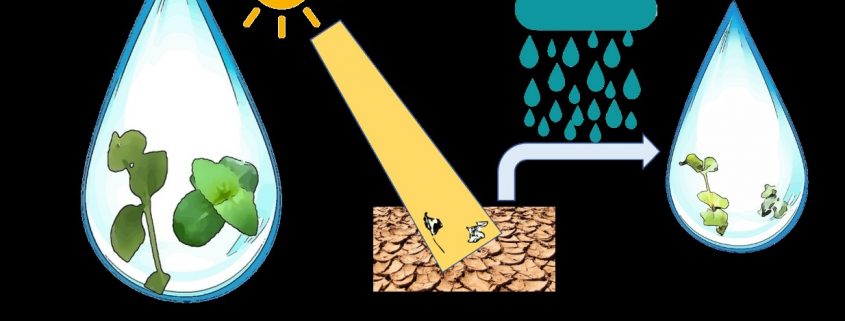The Complex Evolution of Desiccation Tolerance
VanBuren et al. examine the evolution of desiccation tolerance in Lindernia. Plant Cell (2018). https://doi.org/10.1105/tpc.18.00517.
By Robert VanBuren and Dorothea Bartels
Background: Plants have evolved numerous strategies over the last ~400 million years to overcome water limitations. The most extreme way to cope with drought is to simply dry out when water is limited and enter a quiescent, near desiccated state until water becomes available. Resurrection plants can survive years without water and resume photosynthesis and growth within a few days after rehydration. Roughly 135 flowering plants are desiccation tolerant, and several resurrection plant species have emerged as models to dissect the genetic basis of this extreme adaptation. Genomes from resurrection plants have been sequenced, but insights are limited by a lack of dehydration-sensitive outgroups for comparisons. Here, we compared two closely related species with contrasting desiccation tolerance to identify elements that control this trait.
Question: We wanted to know what genomic changes gave rise to desiccation tolerance and test the hypothesis that this trait evolved through repurposing of existing seed desiccation pathways. We also aimed to test the role of gene duplication and network rewiring in the evolution of this complex trait.
Findings: We leveraged a unique comparative system of closely related, desiccation-tolerant, and desiccation-sensitive species to identify genetic changes associated with desiccation tolerance. Though the two Lindernia genomes we sequenced are highly similar, we identified differences in gene duplication associated with desiccation tolerance. This includes expansion of a high-light protection protein from 1 copy to 22 in the desiccation-tolerant L. brevidens. Several seed-specific pathways are activated only in L. brevidens, indicative of network rewiring and co-option of existing genes. Gene expression is stable after moderate dehydration in L. brevidens, which reflects the successful deployment of protective mechanisms. Dynamic and chaotic expression patterns in the desiccation-sensitive L. subracemosa reflect last-ditch efforts to avoid imminent death. Our findings suggest that the evolution of desiccation tolerance is complex and likely quantitative.
Next steps: We identified a series of gene duplications and rewired pathways that likely control desiccation tolerance. The next step is to functionally validate these interactions using the existing transformation system in Lindernia. Components of desiccation-related pathways will be useful for engineering improved drought tolerance into crop plants.
Feature image by Xiaomin Song.
Robert VanBuren, Ching Man Wai, Jeremy Pardo, Valentino Giarola, Stefano Ambrosini, Xiaomin Song, Dorothea Bartels. (2018). Desiccation Tolerance Evolved through Gene Duplication and Network Rewiring in Lindernia. Plant Cell 30: 2943-2958; DOI: https://doi.org/10.1105/tpc.18.00517




